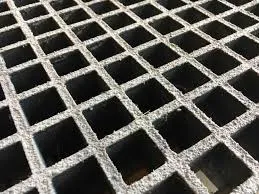
-
 Afrikaans
Afrikaans -
 Albanian
Albanian -
 Amharic
Amharic -
 Arabic
Arabic -
 Armenian
Armenian -
 Azerbaijani
Azerbaijani -
 Basque
Basque -
 Belarusian
Belarusian -
 Bengali
Bengali -
 Bosnian
Bosnian -
 Bulgarian
Bulgarian -
 Catalan
Catalan -
 Cebuano
Cebuano -
 China
China -
 China (Taiwan)
China (Taiwan) -
 Corsican
Corsican -
 Croatian
Croatian -
 Czech
Czech -
 Danish
Danish -
 Dutch
Dutch -
 English
English -
 Esperanto
Esperanto -
 Estonian
Estonian -
 Finnish
Finnish -
 French
French -
 Frisian
Frisian -
 Galician
Galician -
 Georgian
Georgian -
 German
German -
 Greek
Greek -
 Gujarati
Gujarati -
 Haitian Creole
Haitian Creole -
 hausa
hausa -
 hawaiian
hawaiian -
 Hebrew
Hebrew -
 Hindi
Hindi -
 Miao
Miao -
 Hungarian
Hungarian -
 Icelandic
Icelandic -
 igbo
igbo -
 Indonesian
Indonesian -
 irish
irish -
 Italian
Italian -
 Japanese
Japanese -
 Javanese
Javanese -
 Kannada
Kannada -
 kazakh
kazakh -
 Khmer
Khmer -
 Rwandese
Rwandese -
 Korean
Korean -
 Kurdish
Kurdish -
 Kyrgyz
Kyrgyz -
 Lao
Lao -
 Latin
Latin -
 Latvian
Latvian -
 Lithuanian
Lithuanian -
 Luxembourgish
Luxembourgish -
 Macedonian
Macedonian -
 Malgashi
Malgashi -
 Malay
Malay -
 Malayalam
Malayalam -
 Maltese
Maltese -
 Maori
Maori -
 Marathi
Marathi -
 Mongolian
Mongolian -
 Myanmar
Myanmar -
 Nepali
Nepali -
 Norwegian
Norwegian -
 Norwegian
Norwegian -
 Occitan
Occitan -
 Pashto
Pashto -
 Persian
Persian -
 Polish
Polish -
 Portuguese
Portuguese -
 Punjabi
Punjabi -
 Romanian
Romanian -
 Russian
Russian -
 Samoan
Samoan -
 Scottish Gaelic
Scottish Gaelic -
 Serbian
Serbian -
 Sesotho
Sesotho -
 Shona
Shona -
 Sindhi
Sindhi -
 Sinhala
Sinhala -
 Slovak
Slovak -
 Slovenian
Slovenian -
 Somali
Somali -
 Spanish
Spanish -
 Sundanese
Sundanese -
 Swahili
Swahili -
 Swedish
Swedish -
 Tagalog
Tagalog -
 Tajik
Tajik -
 Tamil
Tamil -
 Tatar
Tatar -
 Telugu
Telugu -
 Thai
Thai -
 Turkish
Turkish -
 Turkmen
Turkmen -
 Ukrainian
Ukrainian -
 Urdu
Urdu -
 Uighur
Uighur -
 Uzbek
Uzbek -
 Vietnamese
Vietnamese -
 Welsh
Welsh -
 Bantu
Bantu -
 Yiddish
Yiddish -
 Yoruba
Yoruba -
 Zulu
Zulu
fiberglass products for high temperature
Fiberglass Products for High Temperature Applications
Fiberglass, a composite material composed of fine glass fibers, has gained immense popularity across various industries due to its unique properties, including high thermal resistance, lightweight nature, and excellent tensile strength. Among its numerous applications, fiberglass products designed for high-temperature environments stand out as essential components in sectors such as aerospace, automotive, and manufacturing. This article explores the advantages, applications, and future prospects of fiberglass products specifically designed for high-temperature use.
Properties of Fiberglass in High-Temperature Scenarios
One of the most significant attributes of fiberglass is its remarkable ability to withstand high temperatures. Conventional fiberglass can typically handle temperatures up to 200°C (392°F), but advanced formulations can endure even higher temperatures, reaching upwards of 500°C (932°F) or more. This capability is largely due to the resin used in the production of fiberglass products. High-performance resins such as epoxy and phenolic resins enhance thermal stability, making high-temperature fiberglass products suitable for demanding environments.
Moreover, fiberglass is inherently resistant to corrosion and chemical degradation. This characteristic is particularly critical in industries where exposure to harsh environments, chemicals, and moisture is commonplace. In combination with its low thermal conductivity, fiberglass minimizes heat transfer and ensures that the integrity of components is maintained even in extreme conditions.
Applications in Various Industries
1. Aerospace Industry The aerospace sector frequently encounters high-temperature challenges, particularly in jet engines and thermal protection systems. Fiberglass products, such as insulation blankets and composite structures, are used to protect sensitive components from extreme heat while contributing to overall weight reduction. Their high strength-to-weight ratio is crucial for enhancing fuel efficiency.
2. Automotive Industry In the automotive sector, fiberglass products are employed for heat shields, underbody shields, and engine covers. These components must withstand high exhaust temperatures while protecting other parts from heat damage. The lightweight nature of fiberglass products helps improve fuel efficiency and vehicle performance.
fiberglass products for high temperature

3. Manufacturing and Industrial Applications Many manufacturing processes necessitate the use of high-temperature equipment. Fiberglass insulation is widely utilized in kilns, furnaces, and heat exchangers to maintain energy efficiency and protect workers from heat exposure. Furthermore, fiberglass-reinforced plastics are increasingly used in industrial machinery for components that require both thermal resistance and mechanical strength.
4. Electrical Insulation High-temperature fiberglass fabrics and boards are essential in electrical insulation applications. They provide thermal insulation and electrical insulation, crucial for the functioning of motors, transformers, and electrical panels that operate at elevated temperatures.
Future Prospects and Innovations
The demand for fiberglass products in high-temperature environments is anticipated to grow, driven by ongoing advancements in materials science and engineering. Researchers are exploring new composite materials that enhance the thermal performance of fiberglass, integrating nanotechnology and innovative resin systems that can handle even greater thermal stress.
Moreover, the trend toward lightweight materials in various industries is likely to spur further adoption of fiberglass products. As industries seek to improve efficiency, reduce emissions, and enhance performance, high-temperature fiberglass components present a viable solution that meets these objectives.
Sustainability is also becoming a significant focus within material development. As manufacturers seek more eco-friendly options, the potential for recyclable fiberglass products is being explored. Enhanced methods of recycling fiberglass can contribute to a more sustainable manufacturing process and reduce the overall environmental impact.
Conclusion
In summary, fiberglass products for high-temperature applications present an invaluable resource across multiple industries. With their impressive thermal resistance, lightweight characteristics, and durability, they play a pivotal role in enhancing operational efficiency and performance in demanding environments. As advancements continue in materials technology and sustainability practices, the future of fiberglass products looks promising, ensuring their essential role in the high-temperature applications of tomorrow. Whether in aerospace, automotive, manufacturing, or electrical insulation, fiberglass products are set to remain at the forefront of innovation and performance excellence.









